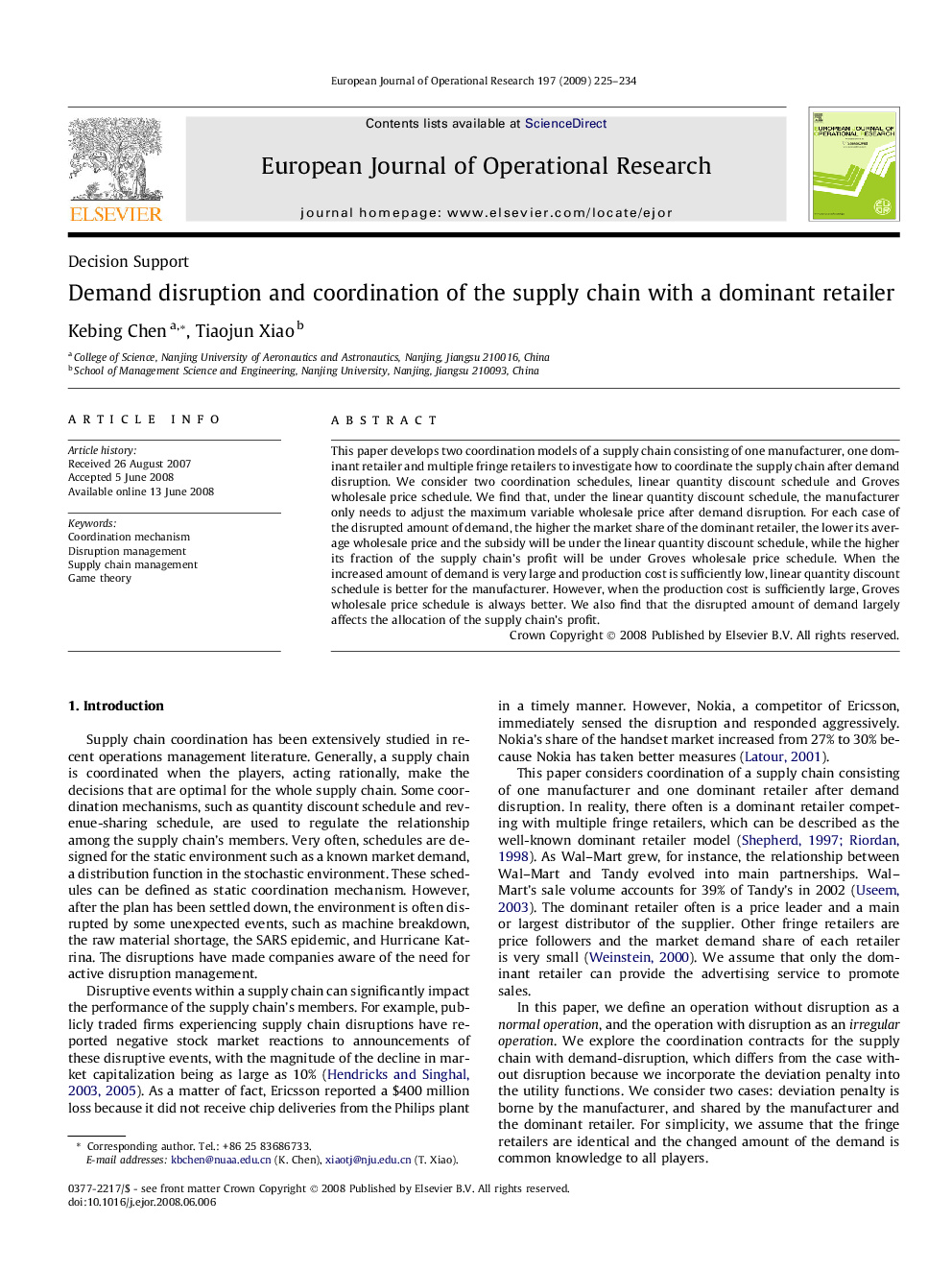| Article ID | Journal | Published Year | Pages | File Type |
|---|---|---|---|---|
| 482722 | European Journal of Operational Research | 2009 | 10 Pages |
This paper develops two coordination models of a supply chain consisting of one manufacturer, one dominant retailer and multiple fringe retailers to investigate how to coordinate the supply chain after demand disruption. We consider two coordination schedules, linear quantity discount schedule and Groves wholesale price schedule. We find that, under the linear quantity discount schedule, the manufacturer only needs to adjust the maximum variable wholesale price after demand disruption. For each case of the disrupted amount of demand, the higher the market share of the dominant retailer, the lower its average wholesale price and the subsidy will be under the linear quantity discount schedule, while the higher its fraction of the supply chain’s profit will be under Groves wholesale price schedule. When the increased amount of demand is very large and production cost is sufficiently low, linear quantity discount schedule is better for the manufacturer. However, when the production cost is sufficiently large, Groves wholesale price schedule is always better. We also find that the disrupted amount of demand largely affects the allocation of the supply chain’s profit.
